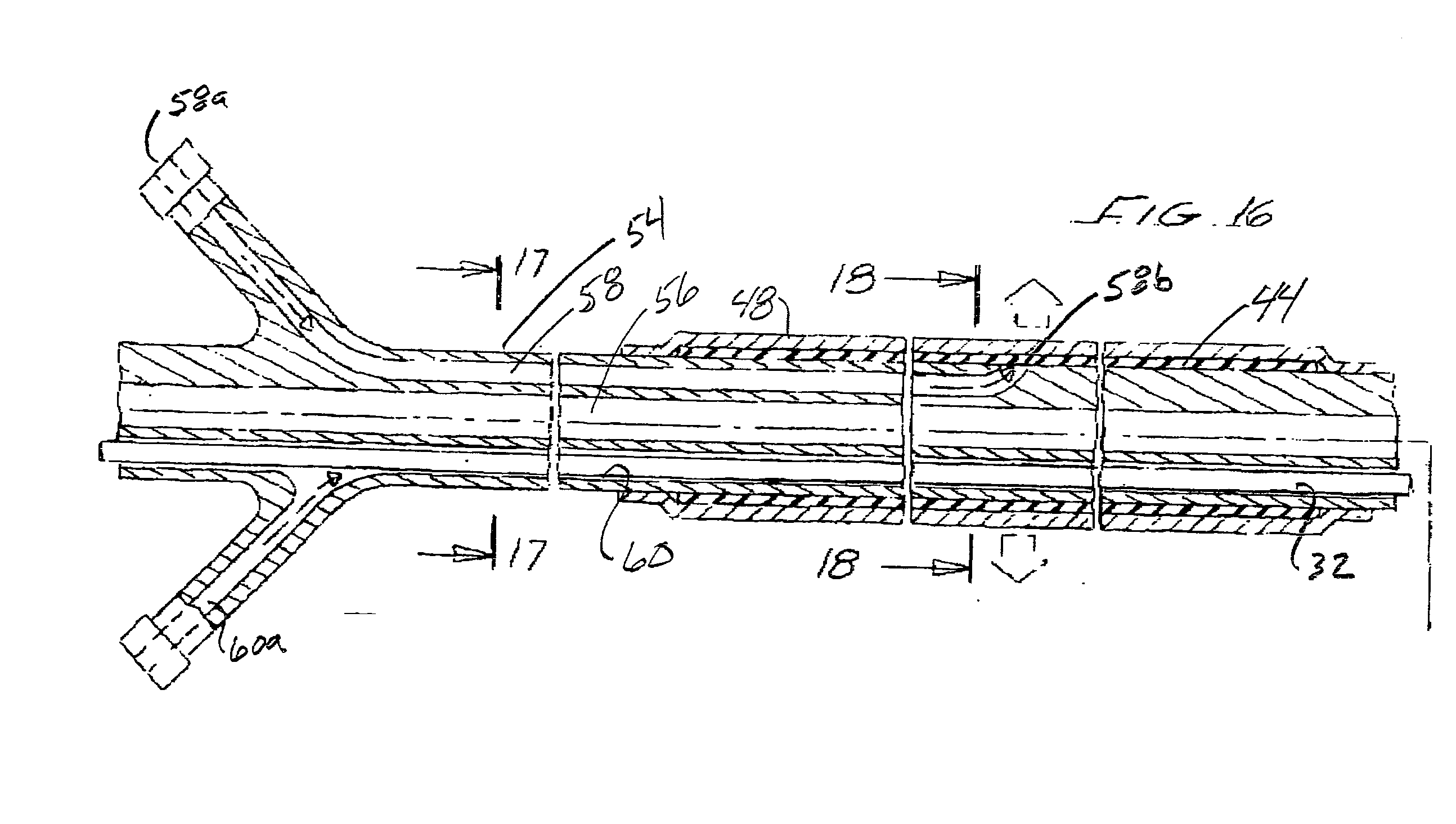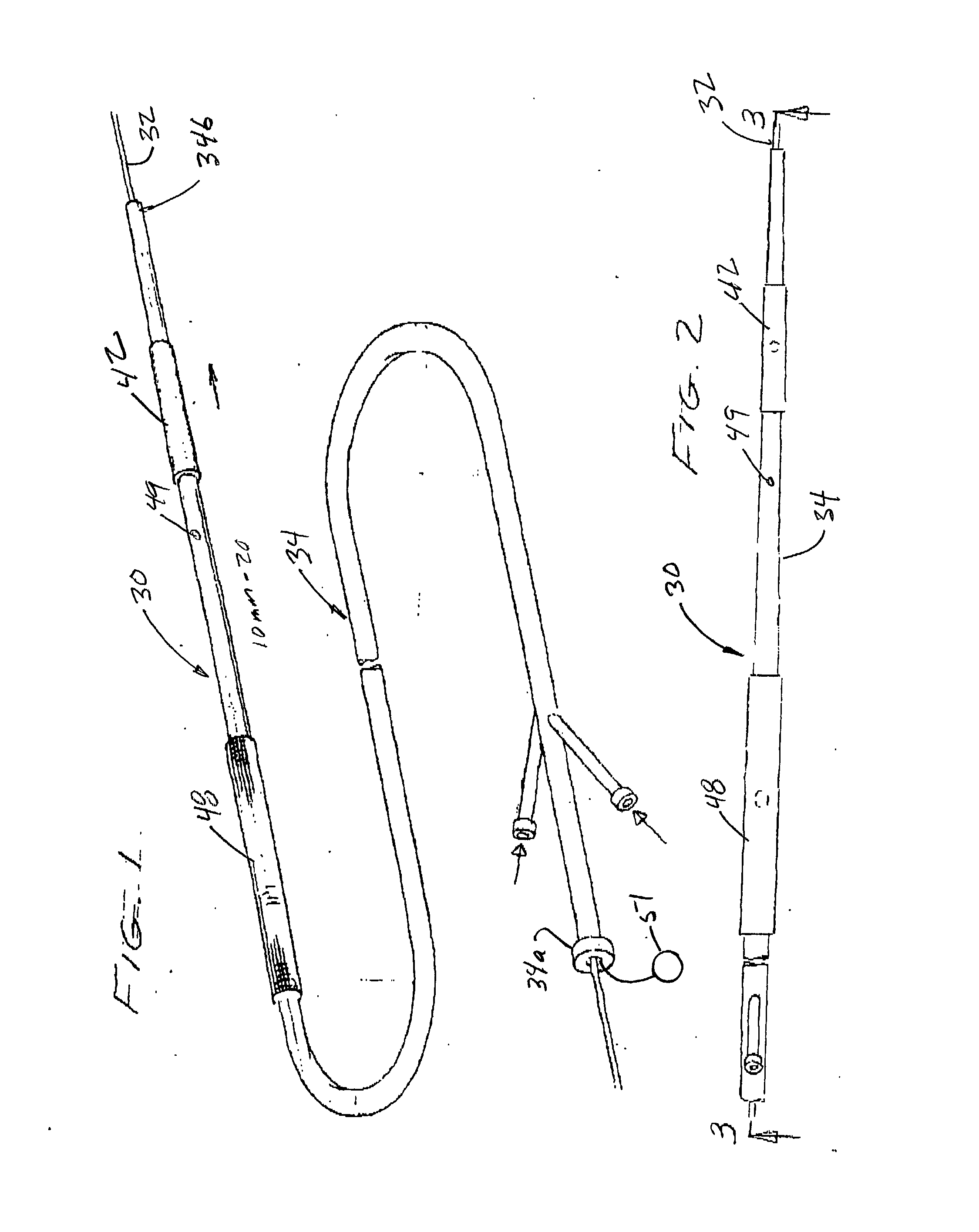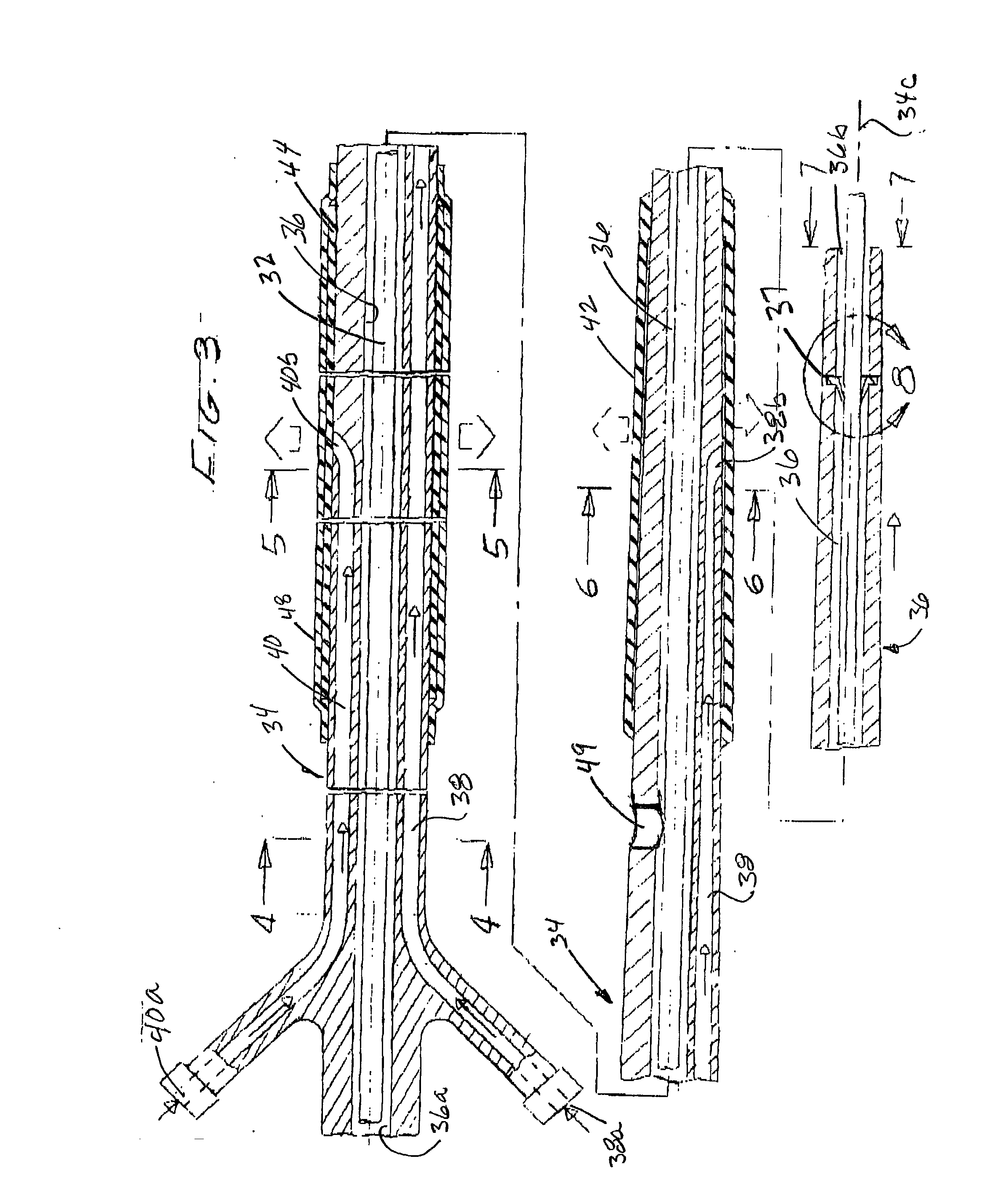Stent with combined distal protection device
a protection device and distal protection technology, applied in the field of stents with combined distal protection devices, can solve the problems of patient death and permanent injuries
- Summary
- Abstract
- Description
- Claims
- Application Information
AI Technical Summary
Benefits of technology
Problems solved by technology
Method used
Image
Examples
Embodiment Construction
[0041] Referring to the drawings and particularly to FIGS. 1, 2 and 3, one form of the catheter system of the invention for balloon angioplasty and stent delivery is there illustrated and generally designated by the numeral 30. This system here comprises a guide wire 32 and an elongated catheter 34 having a proximal end 34a, a distal end 34b and an axial center line 34c. Catheter 34 is preferably formed of a biocompatible and hydrophilic compatible material, such as a lubricous polyimide or polyethylene. Other suitable materials for the catheter include nylons, urethanes, and polypropylene that are preferably compatible with coatings such as silicone and various hydrophilic coatings.
[0042] As is best seen by also referring to FIGS. 4, 5 and 6, in the present form of the invention, catheter 34 is provided with a first passageway 36 through which the guidewire 32 can be slideably moved. As illustrated in FIG. 3, first passageway 36 is coaxially aligned with axial center line 34c. By w...
PUM
 Login to View More
Login to View More Abstract
Description
Claims
Application Information
 Login to View More
Login to View More - R&D
- Intellectual Property
- Life Sciences
- Materials
- Tech Scout
- Unparalleled Data Quality
- Higher Quality Content
- 60% Fewer Hallucinations
Browse by: Latest US Patents, China's latest patents, Technical Efficacy Thesaurus, Application Domain, Technology Topic, Popular Technical Reports.
© 2025 PatSnap. All rights reserved.Legal|Privacy policy|Modern Slavery Act Transparency Statement|Sitemap|About US| Contact US: help@patsnap.com



